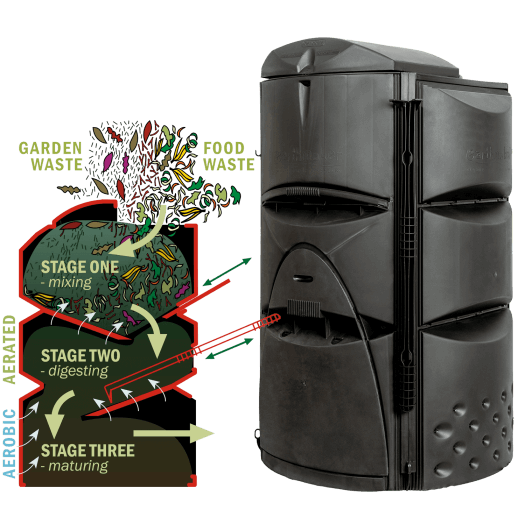
If you’ve ever wondered how to start composting at home or how to make compost at home, this guide is for you. Composting is one of the best ways to divert kitchen scraps and garden waste from landfills, while creating nutrient-rich fertilizer for your plants.
Composting is particularly relevant for all who embrace sustainability and look for ways to reduce their environmental footprint—as well as those who wish to enrich their soil. Below, we’ll walk through how to make compost at home step by step—from choosing the right bin to harvesting your finished compost.
Making Good Compost At Home
Step#1: Set Up Your Compost Bin
Choose a spot with good drainage and some exposure to sunlight. Ensure it’s convenient to access so you don’t forget to empty your kitchen scraps. Odour is not an issue with the Earthmaker as it is an aerobic process.
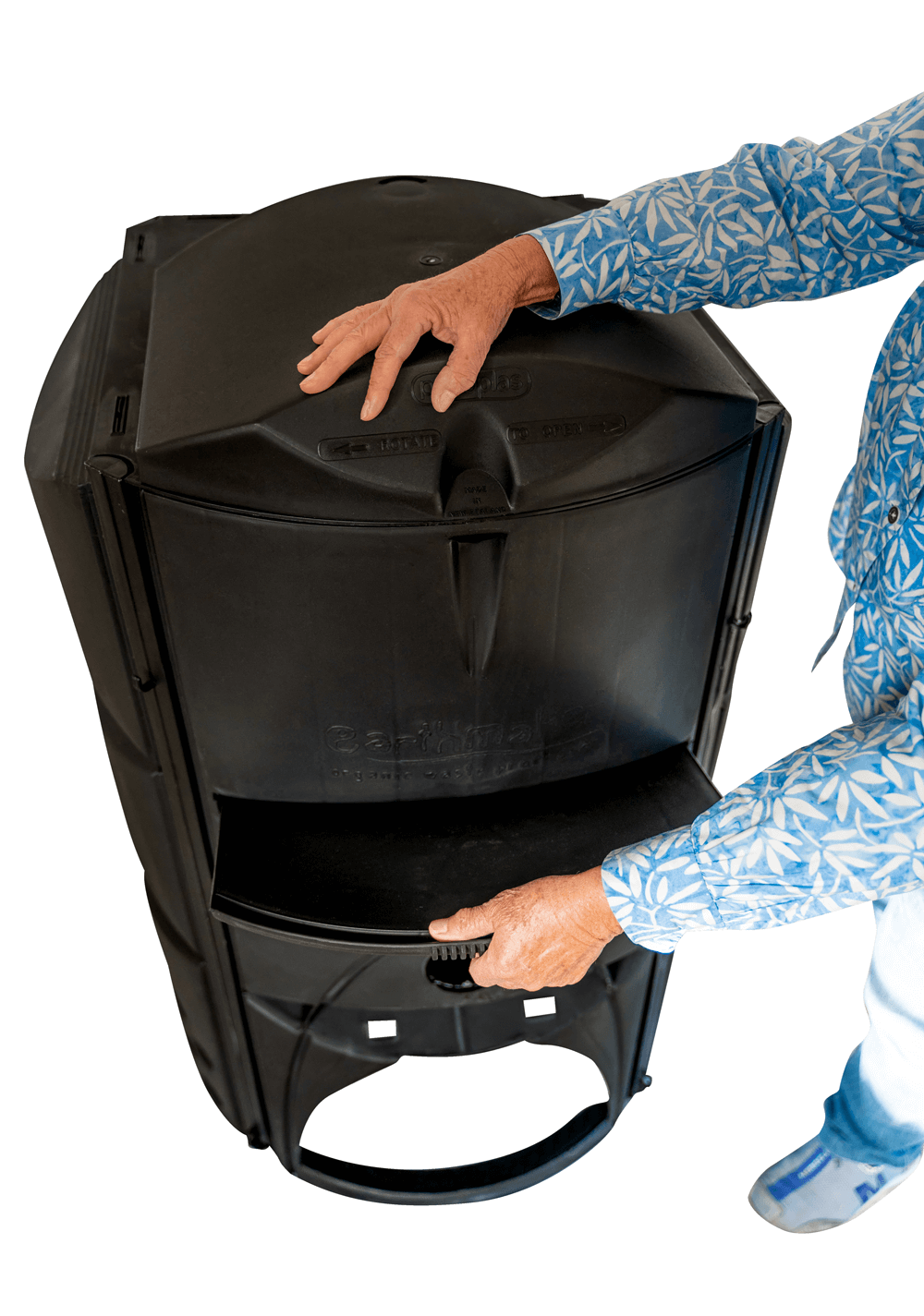
Step#2: Layer Browns and Greens
Start with a layer of browns like dry leaves or newspaper on the bottom. Add a layer of greens (kitchen scraps, lawn clippings), then repeat with another layer of browns. This layered approach speeds up decomposition and helps aeration. Layering is less important with the Earthmaker as heat draws air up through the holes in the shelves. Throwing dry leaves on top of food waste reduces the incidence of fruit flies.
Step#3: Keep it Moist (But Not Soaking)
If necessary, spray each layer lightly with water as you build. Compost made of organic food waste should be about as damp as a wrung-out sponge.
Step#4: Turn and Aerate
Single bin composting means using a pitchfork or shovel to turn your compost every 1–2 weeks. This oxygenates the pile and prevents it from turning slimy or smelly. The Earthmaker Aerobic Composter aerates automatically as air flows up through the shelves and material loosens when it is easily moved from shelf to shelf to ground.
Step#5: Monitor and Adjust
If it’s too dry, add water. If it’s too wet, mix in more browns. Keep an eye on temperature; a healthy compost pile can heat up to 50–65°C in the centre (especially helpful for killing weed seeds). HINT: To kill weeds, place them in a black bag and expose it to sunlight for a couple of week before adding them to the compost pile.
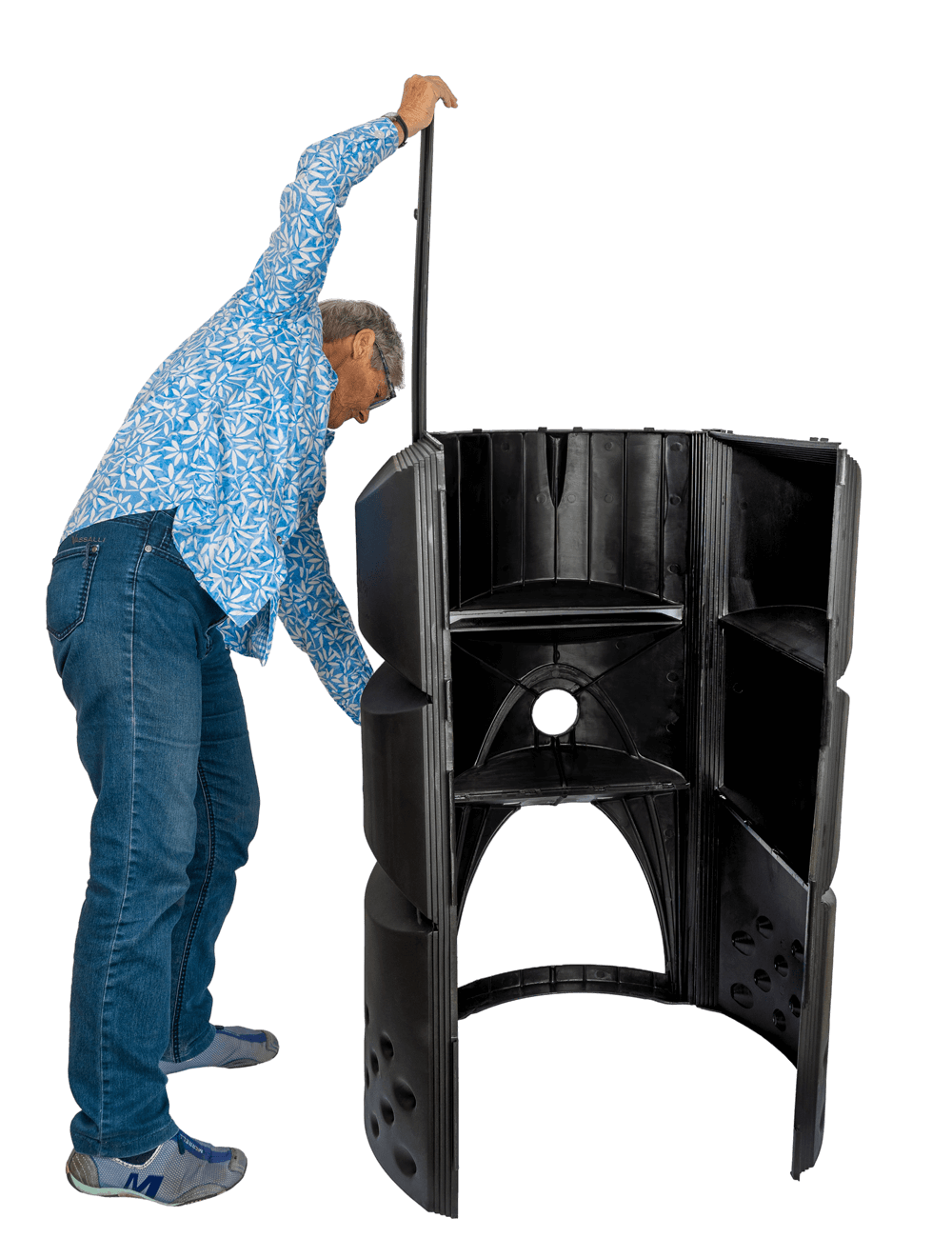
Step#6: Harvest Your Compost
In 3–6 months (depending on method and conditions), you’ll notice the compost has turned into a dark, crumbly, earthy-smelling material. Use this “black gold” around your garden beds, potted plants, or mix it into your soil.
Choosing the Right Composting Method
Before you dive in, decide which composting system suits your home and lifestyle:
Traditional Three-Bin Compost System
Ideal if you have a large backyard and plenty of time and energy. Great for larger volumes of garden clippings and kitchen scraps.
Single Compost Bin or Pile
Okay for normal volumes of garden waste and kitchen scraps—provided you have the time and energy to lift and turn material for regular aeration. Unlike the three-bin system, single bins will mix new and old material.
Tumbler Bin
Enclosed system that can speed up decomposition. Less likely to attract pests. Tumblers are a batch-by-batch system requiring storage of waste while the previous batch is processing.
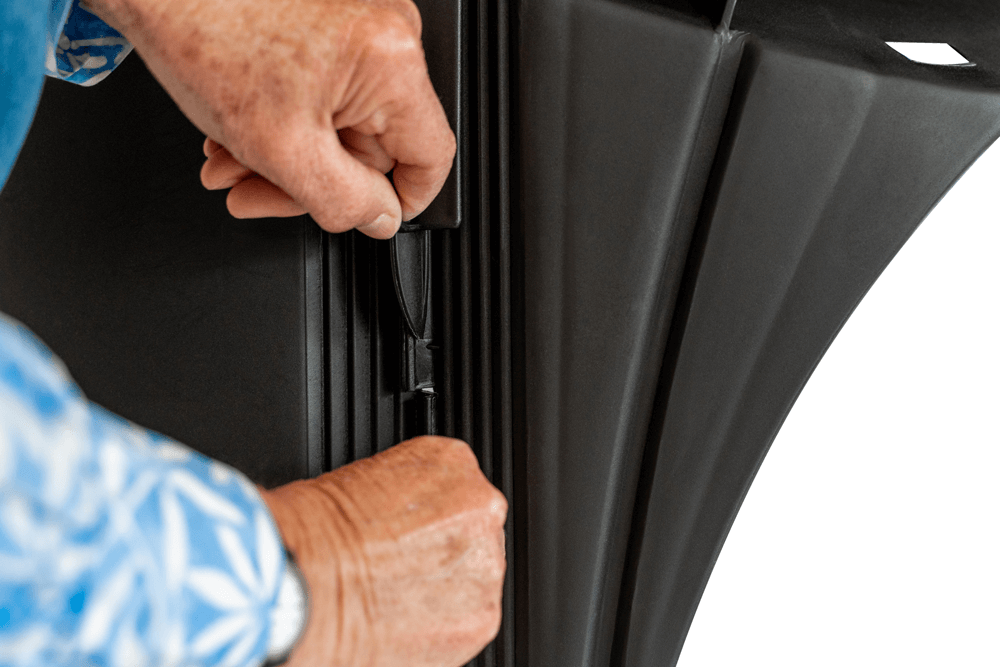
Domestic Composting
A food waste only fermentation-based system like a domestic compost bin that handles cooked food and meat scraps. Perfect for small households or apartments. Disposal of the resulting material may be an issue—the usual recommendation is to dig a trench and bury it.
Worm Farm (Vermicomposting)
Uses worms to break down food scraps quickly and odorlessly.
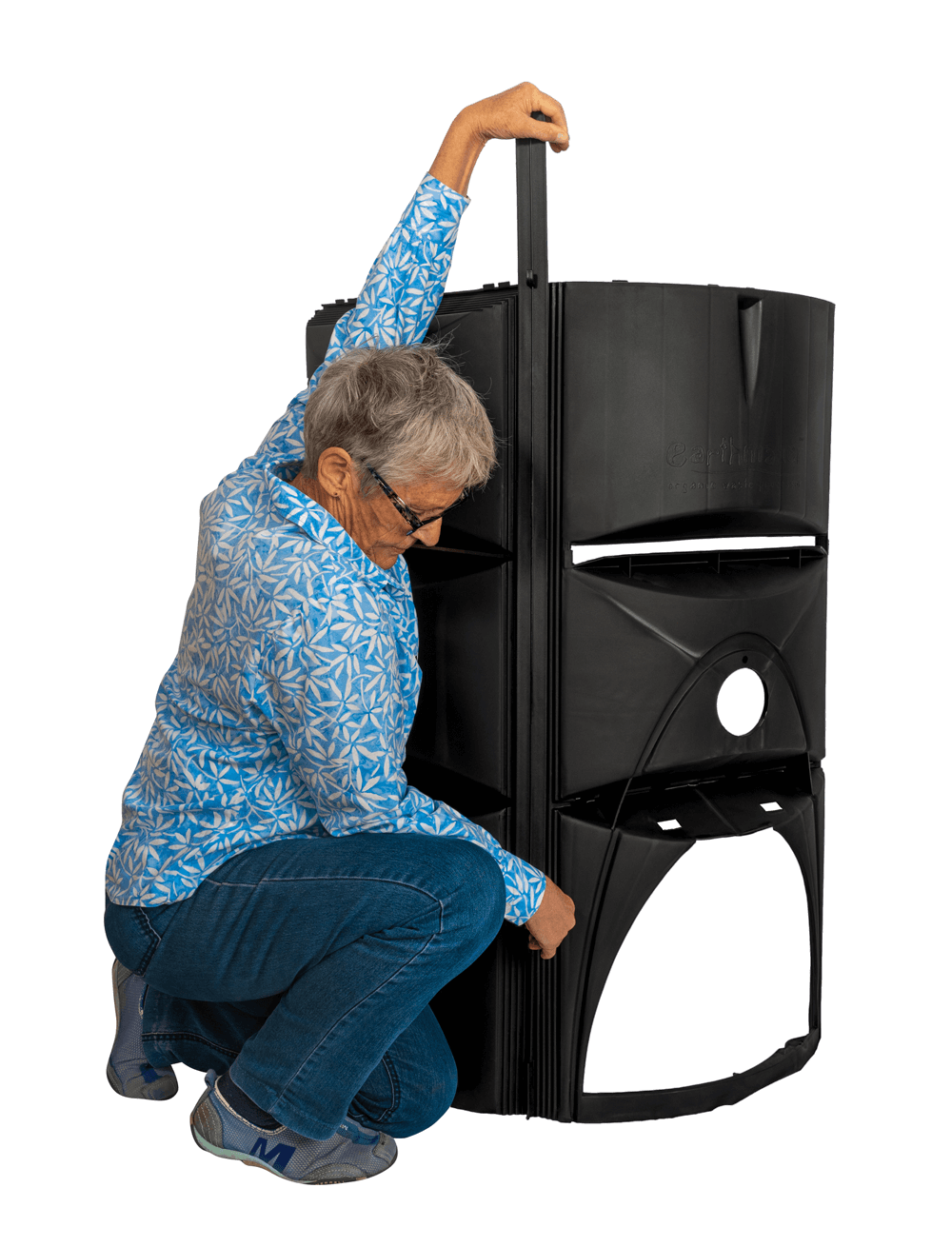
Gathering Compost Ingredients
To make good compost at home, you’ll need a balance of “green” (nitrogen-rich) and “brown” (carbon-rich) materials:
- Greens: Fruit and vegetable scraps, coffee grounds, tea bags, grass clippings, and fresh garden waste.
- Browns: Dry leaves, straw, shredded paper and cardboard, untwood chips, sawdust (untreated), and twigs.
Aim for roughly a 2:1 or 3:1 ratio of browns to greens. This balance helps create the ideal environment for microbes and worms to break down the organic matter.
How To Make Good Compost
To make good compost at home, consistency is key. Regularly feed your compost with kitchen scraps, add brown materials to balance it out, and turn it to keep it aerated. If you follow these simple steps, you’ll be well on your way to having a steady supply of garden-friendly compost.
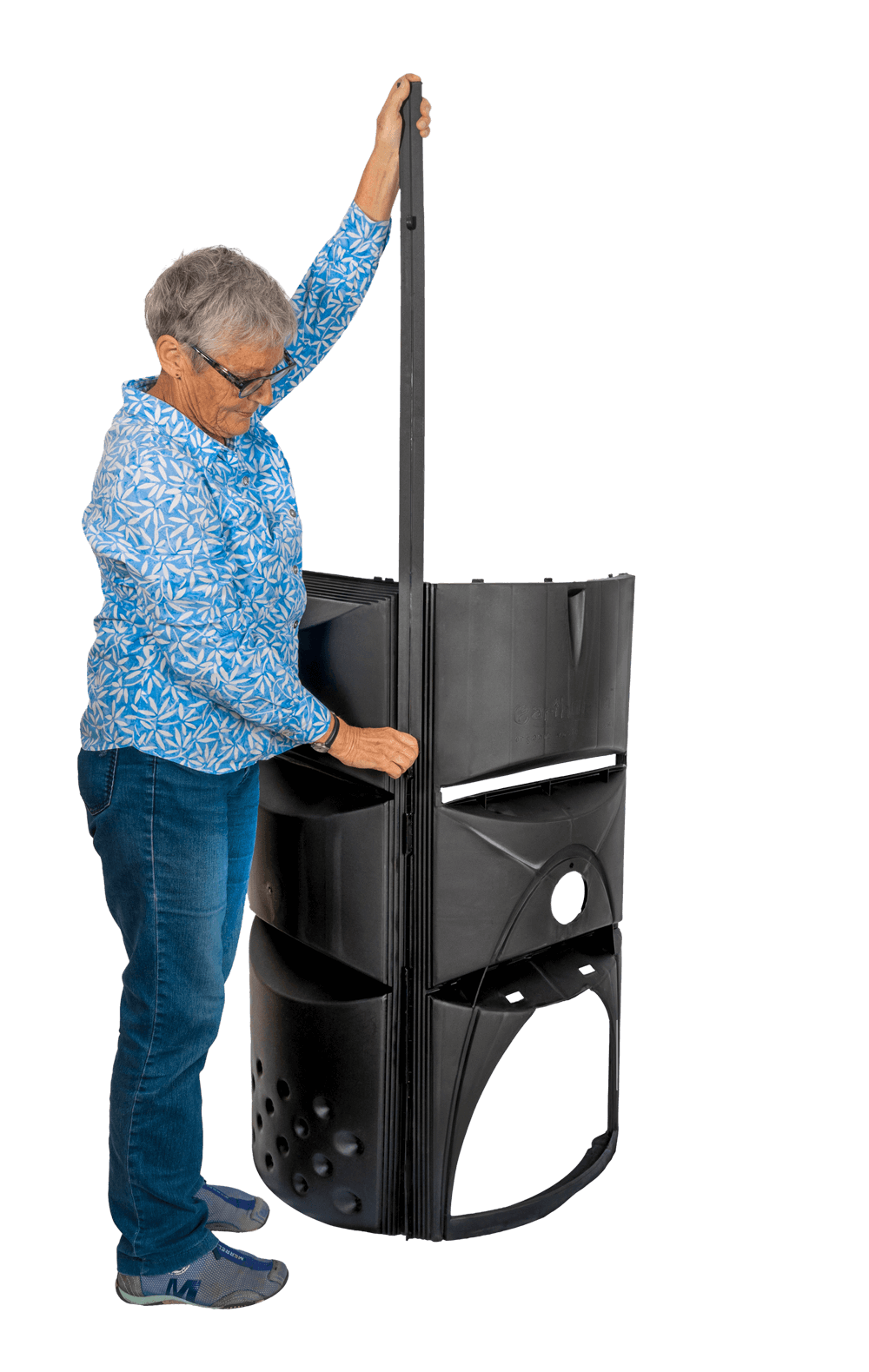
Troubleshooting Common Compost Problems
- Bad Odours: Usually a sign of too much moisture or too little airflow. Turn the pile and add more browns.
- Slow Decomposition: Might be lacking nitrogen or moisture. Add more greens and ensure the pile is damp.
- Pests: If rats or mice appear, avoid adding cooked foods (unless using Bokashi), and consider using a rodent-proof bin or tumbler.
Tips for Composting in New Zealand
- Use Local Resources: Check if your local council offers composting courses or subsidized bins. Many regions in NZ encourage residents to start composting at home.
- Mind the Weather: In wetter regions, use a lid or cover to prevent oversaturation. In drier areas, water your compost a bit more.
- Garden Clippings: Take advantage of New Zealand’s lush gardens—add grass clippings and leaves to keep your compost pile thriving.
- Avoid Noxious Weeds: Plants like gorse and other persistent weeds may need special disposal unless you’re sure your compost pile can reach high temperatures to kill seeds.
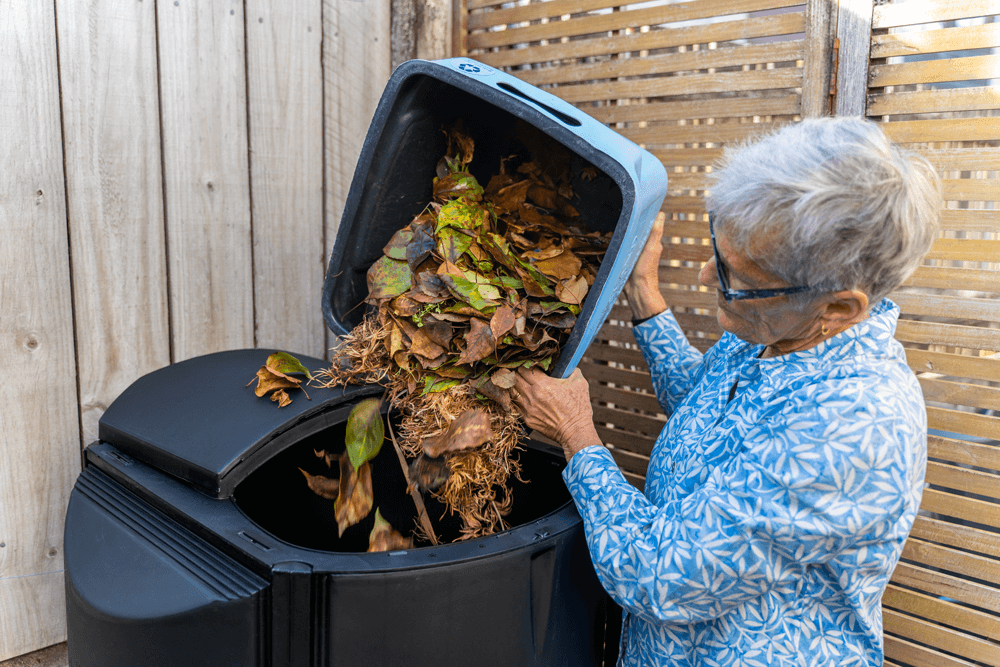
Benefits of Home Composting
Reduce Waste
Home composting diverts kitchen scraps and garden clippings away from landfills, directly supporting New Zealand’s sustainability goals. By turning organic waste into a valuable soil amendment, you help minimise the strain on local waste management systems.
Improve Soil Health
Compost enriches soil structure, promoting better drainage and aeration. It also adds essential nutrients that boost plant growth, making your garden healthier and more resilient to pests and diseases.
Save Money
By producing your own nutrient-rich compost, you can cut down on store-bought soil conditioners and fertilisers. Over time, the savings add up, and you’ll enjoy healthier plants without the ongoing expense of commercial products.
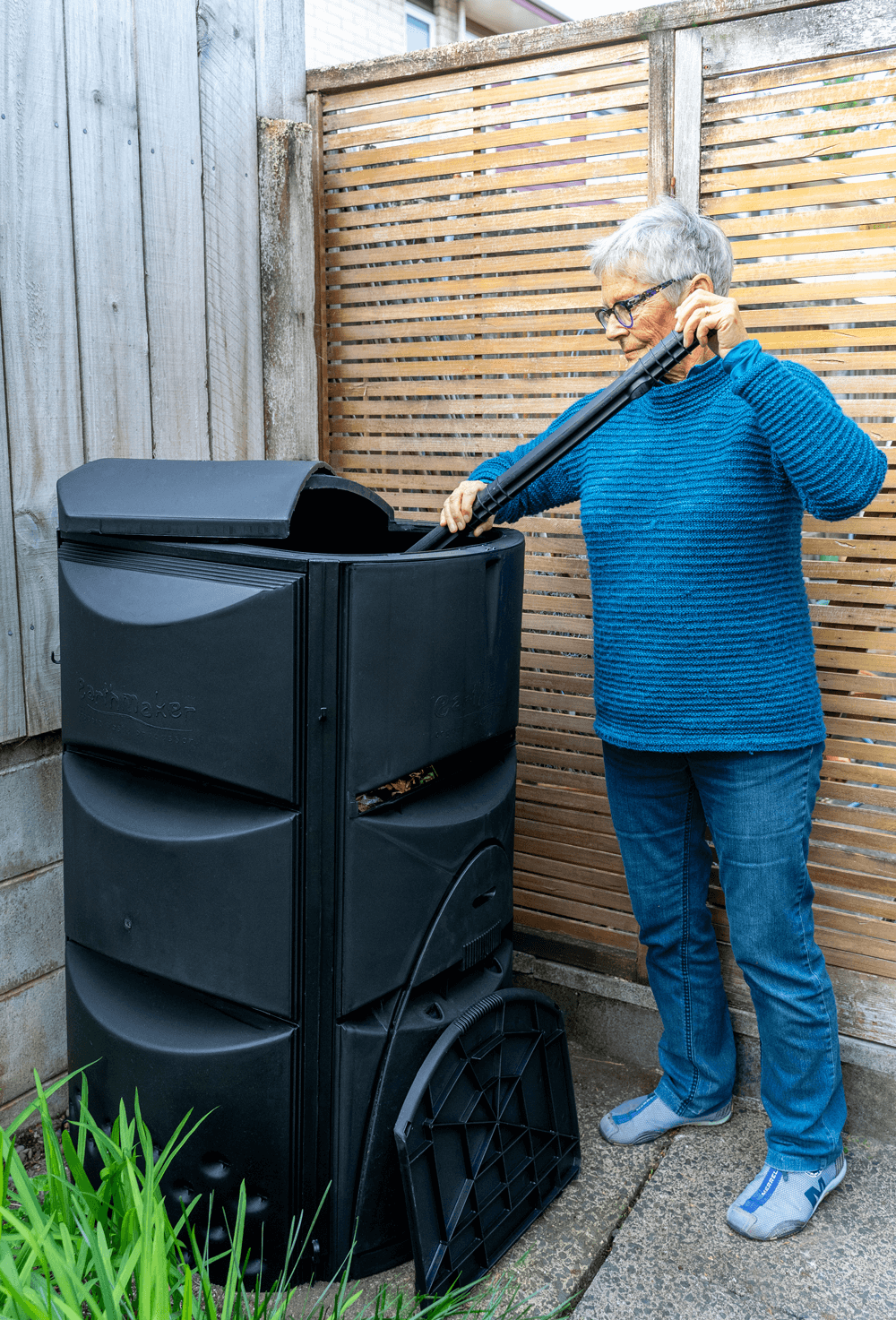
Lower Greenhouse Gas Emissions
When organic waste decomposes in landfills, it generates methane—a potent greenhouse gas. Composting at home helps reduce methane emissions by breaking down waste aerobically (with oxygen), thereby lowering your household’s carbon footprint.
Encourage Biodiversity
A well-managed compost pile attracts beneficial insects and microorganisms that naturally improve soil fertility. This rich, biologically active environment boosts the diversity of helpful critters in your garden, from earthworms to pollinators.
Boost Plant Health
Regularly applying compost to your garden creates a steady supply of nutrients for your plants. As a result, they develop stronger root systems, require less watering, and are more resistant to disease—enhancing the overall vitality of your garden.
Promote a Circular Economy
Composting helps establish a closed-loop cycle where organic materials are continually returned to the soil. This circular approach is crucial for creating a more sustainable future—reducing reliance on landfills and ensuring valuable resources are kept in use as long as possible.
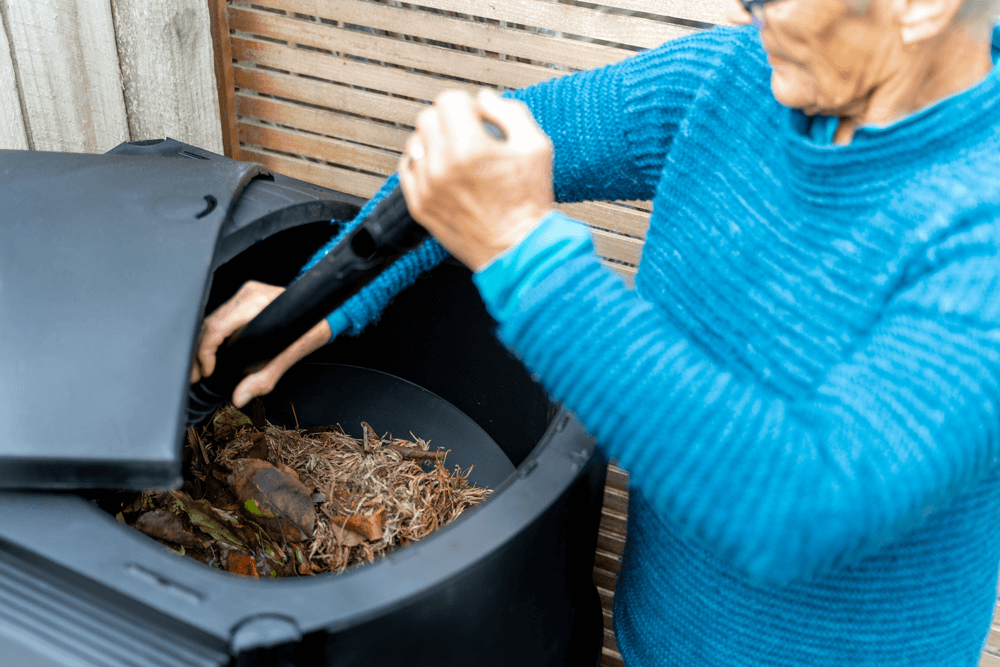
Conclusion
Learning how to compost at home is a rewarding and straightforward process that benefits you, your garden, and the environment. By understanding how to do compost at home and following the how to make compost at home step by step approach, you’ll quickly master how to make good compost at home.
If you want a seamless composting experience, consider Earthmaker. Designed with Kiwi gardeners in mind, Earthmaker’s aerobic, three-stage, vertical, gravity-assisted compost bins help simplify the process, speed up decomposition, enrich your soil and reduce greenhouse gas emissions.
By choosing Earthmaker, you’ll not only make composting easy but also contribute to a more sustainable, waste-conscious future for Aotearoa. Get started on your composting journey today and discover the difference Earthmakers can make in your backyard!
